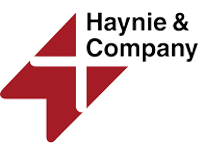26 Jul 2022 Back-To-School Consumer Business Outlook: Return of the Discount
Authored by RSM US LLP, July 26, 2022
During the COVID-19 pandemic retailers and wholesalers faced supply chain disruptions and high demand for goods. This caused continual back orders and lost sales due to lack of stock. Companies reacted by increasing production orders and addressing supply chain challenges.
Since November 2021, retail inventory has been spiking, well over pre-pandemic levels. Wholesale inventory is now over 20% higher than pre-pandemic levels, according to the U.S. Census Bureau.

Inventory is filling shelves, warehouses and overstock facilities. Retailers are having issues with receiving, and at times have been forced to return inventory to suppliers due to lack of space. Inventory levels are compounded by lower than forecasted consumer demand that spiked during the pandemic.
The discount strategy
To address the inventory surplus, back-to-school shoppers can expect the return of the discount as companies flush excess inventory. For the past few years discounts were uncommon due to limited supply and high demand. Now retailers will likely rely on this strategy, however, margins are already hit by high transportation and labor costs. Profitability will continue to shrink for some companies needing to lower prices to stimulate demand.
And while companies may have surplus inventory, they might not necessarily have the right inventory. Delays in the supply chain on some products and shifting consumer preferences on scarce items will likely continue to be a concern for companies. Shoppers may face challenges in finding back-to-school specific items like clothing and backpacks that tend to be high demand items.
Key takeaways
To address inventory challenges:
- Companies should focus on business analytic tools and forecasting methods to project inventory demand. Including market volatility and macroeconomic shifts in demand will be key to accurate demand planning.
- Building consumer brand value and loyalty will be important to maintaining margin. Companies focused on customer experience will be better positioned to maintain margins.
- Companies with robust consumer data will be able to predict changes in demand more accurately. Focusing on digital transformation to improve the collection and visualization of customer data is key to future inventory decisions.
DO YOU HAVE QUESTIONS OR WANT TO TALK?
Fill out the form below and we’ll contact you to discuss your specific situation.
This article was written by Nick Stuart and originally appeared on 2022-07-26.
2022 RSM US LLP. All rights reserved.
https://realeconomy.rsmus.com/back-to-school-consumer-business-outlook-return-of-the-discount/
RSM US Alliance provides its members with access to resources of RSM US LLP. RSM US Alliance member firms are separate and independent businesses and legal entities that are responsible for their own acts and omissions, and each are separate and independent from RSM US LLP. RSM US LLP is the U.S. member firm of RSM International, a global network of independent audit, tax, and consulting firms. Members of RSM US Alliance have access to RSM International resources through RSM US LLP but are not member firms of RSM International. Visit rsmus.com/aboutus for more information regarding RSM US LLP and RSM International. The RSM(tm) brandmark is used under license by RSM US LLP. RSM US Alliance products and services are proprietary to RSM US LLP.

Haynie & Company is a proud member of RSM US Alliance, a premier affiliation of independent accounting and consulting firms in the United States. RSM US Alliance provides our firm with access to resources of RSM US LLP, the leading provider of audit, tax and consulting services focused on the middle market. RSM US LLP is a licensed CPA firm and the U.S. member of RSM International, a global network of independent audit, tax and consulting firms with more than 43,000 people in over 120 countries.
Our membership in RSM US Alliance has elevated our capabilities in the marketplace, helping to differentiate our firm from the competition while allowing us to maintain our independence and entrepreneurial culture. We have access to a valuable peer network of like-sized firms as well as a broad range of tools, expertise, and technical resources.

